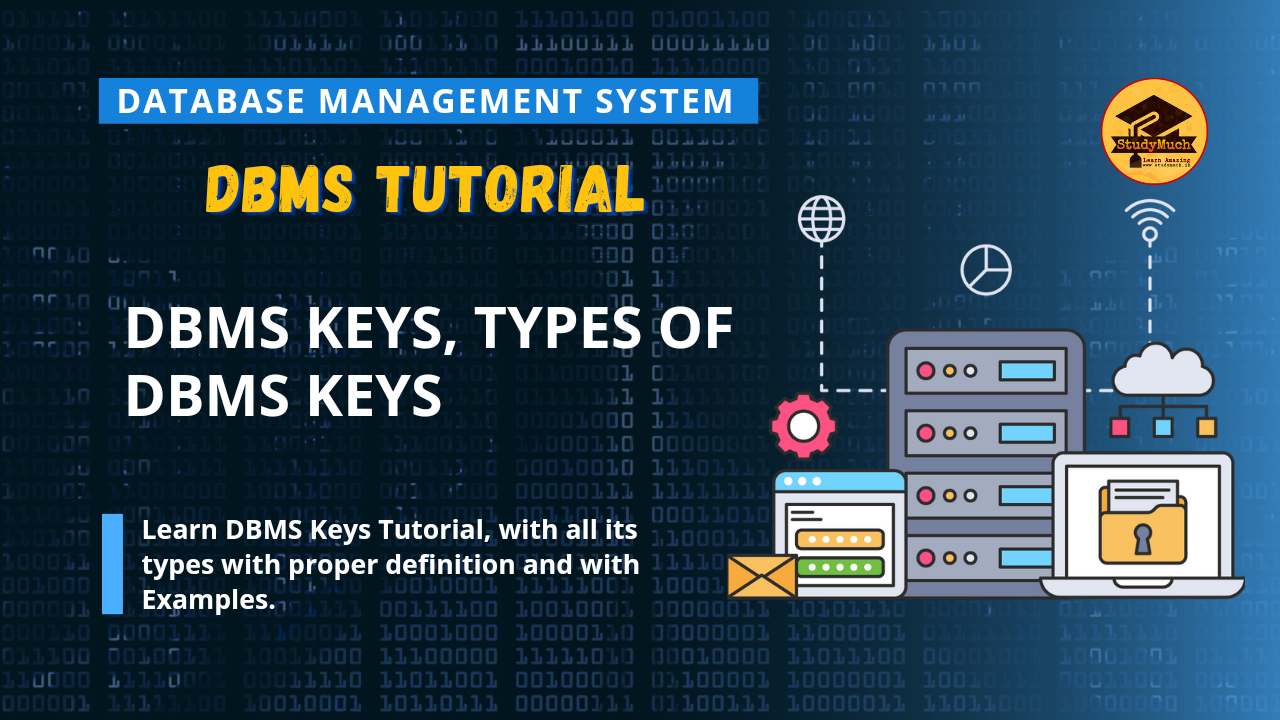DBMS Keys

DBMS Keys
A database management system (DBMS) is a software system used to manage data in a database. One of the most important aspects of a DBMS is the use of keys, which are used to uniquely identify records in a database. In this blog post, we will define what DBMS keys are and discuss the different types of keys in detail.
Definition of DBMS Keys
In a database, a key is a field or set of fields that is used to identify a record in a table. The primary key is the most important key in a table as it uniquely identifies each record in the table. Keys are important because they allow us to efficiently search for and retrieve data from a database.
Types of DBMS Keys
Some important Keys of DBMS are provided below with the definition;
Primary Key
A primary key is a field or set of fields in a table that uniquely identifies each record in the table. It cannot contain null values and must be unique across all records in the table. Primary keys are used to enforce data integrity and ensure that each record in the table is unique. A table can have only one primary key.
Foreign Key
A foreign key is a field or set of fields in a table that refers to the primary key of another table. It is used to create a relationship between two tables, and ensures that data in one table is related to data in another table. A foreign key can contain null values and can have duplicate values.

Candidate Key
A candidate key is a field or set of fields in a table that can be used as a primary key. It must be unique and cannot contain null values. A table can have multiple candidate keys.
Unique Key
A unique key is a field or set of fields in a table that must be unique across all records in the table. It can contain null values, but only one record can have a null value for the unique key. A table can have multiple unique keys.
Composite Key
A composite key is a key that consists of two or more fields in a table. It is used when a single field cannot uniquely identify each record in the table. The combination of fields in the composite key must be unique across all records in the table.
Alternate Key
In a relational database management system (DBMS), an alternate key is a column or set of columns in a table that uniquely identifies each record, but is not the primary key. The primary key is a column or set of columns that uniquely identifies each record in a table, and is used to enforce data integrity and to create relationships between tables.
Alternate keys are also known as candidate keys, and they are important for database design because they provide an additional way to search for and retrieve records from a table. For example, if a table has a primary key based on a customer ID, an alternate key could be based on the customer’s email address.
Conclusion
DBMS keys are an essential part of a database. They are used to uniquely identify records in a table, create relationships between tables, and ensure data integrity. Understanding the different types of keys in a DBMS is crucial for designing and implementing efficient databases. By using keys correctly, we can create databases that are easy to search and retrieve data from, and that maintain data integrity.
So, in this blog post you have learned the DBMS Keys with its types. I hope you have leaned better and if you have any doubt regarding this tutorial then you can ask in the comment section.
Learn Related;


1 Comment
tlover tonet · May 5, 2024 at 11:22 pm
Enjoyed looking through this, very good stuff, thanks.